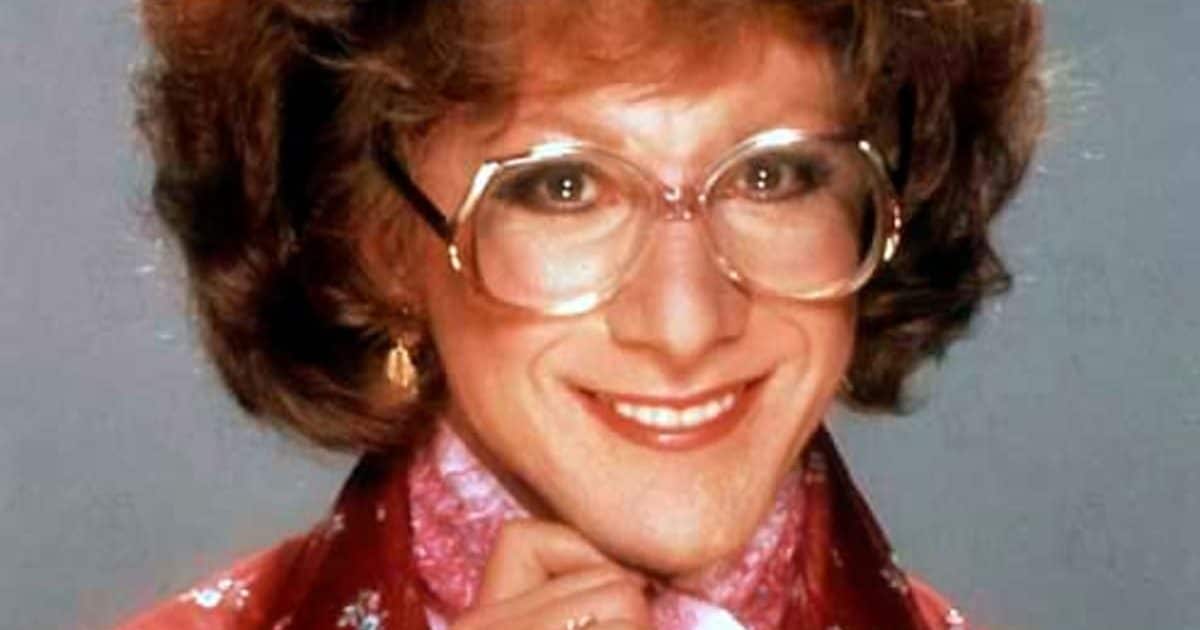Men dressed as women has always been a favourite subject for comedy movies, most famously providing the basis for one of the most acclaimed comedies ever, Some Like It Hot. However, the subject hadn’t attracted a serious Oscar-winning actor like Dustin Hoffman before 1982’s Tootsie.
As a comment on gender relations and an affectionate look at life as an actor, Tootsie became one of the best-loved comedies of the 80s. Let’s take a look back at the film with some facts you may not have known.
20. Dustin Hoffman had originally been working on another, darker gender-swap film
Tootsie began life in the early 70s, as a stage play by Don McGuire entitled Would I Lie To You? Producer Charles Evans bought the screen option to the play, and proceeded to shop it around Hollywood. The project did the rounds for much of the following decade, before finally getting off the ground with Dustin Hoffman attached to star.
In its early stages, Tootsie had in fact been a rival project to something Hoffman was working on with writer Murray Schisgal. Their project had been about a male tennis player who disguises himself as a woman in order to advance in the sport. Once they got wind of Would I Lie To You?, Hoffman and Schisgal abandoned their idea and got involved with that project instead.

19. Three British acting legends were considered for the lead role before Hoffman
The dual lead role of Michael Dorsey/Dorothy Michaels gave Dustin Hoffman a golden opportunity to lampoon his reputation as an obsessive actor who tends to take his craft far too seriously. However, as tends to be the case in the movie business, he was not the first actor considered for the part.
In the early stages of the project’s development, Peter Sellers and Michael Caine were offered for the role of Michael/Dorothy. Dudley Moore, then a popular star thanks to 1979’s 10 and 1981’s Arthur, is also said to have been considered for the part. Presumably this means that, when Americans think of men in drag, they think of British actors first.
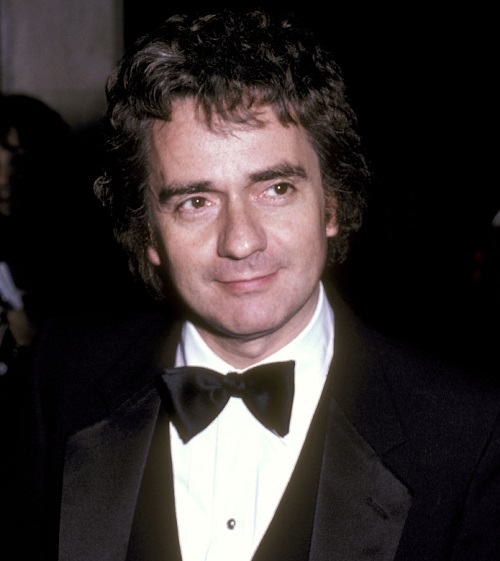
18. Sydney Pollack originally thought it was a ‘one-joke movie’
Dick Richards and Hal Ashby had both been attached to direct early on, but eventually Sydney Pollack signed on to call the shots in 1981. However, Pollack took some persuading to do so, having been disappointed with the original script, which he dismissed as a “one-joke movie.” Once Pollack was on board as director, he hired M*A*S*H* screenwriter Larry Gelbart to do a rewrite, removing a lot of the cruder humour.
Reportedly it was Gelbart who developed the central idea that spending time as a woman ultimately makes Michael a better man. Pollack was also reluctant to take the supporting role of Michael’s agent, as he hadn’t taken a major acting role in almost 20 years – but eventually conceded after Hoffman sent him flowers with the note ‘Love, Dorothy.’

17. A LOT of writers worked on the film
Don McGuire’s play may have been the starting point for Tootsie, but the script went through a great many hands on the way to the screen. While the screenplay is credited to Larry Gelbart, Murray Schisgal and Don McGuire, a number of other writers did uncredited work on the film, including Barry Levinson and Elaine May. On top of this, Hoffman is said to have been entirely responsible for the creation of his own character, while his co-stars – most notably Bill Murray and Teri Garr – are known to have ad-libbed a great deal of their dialogue.
As uncertain as the film’s authorship might be, it didn’t stop the film from getting a Best Original Screenplay Oscar nomination, with Gelbart, Schisgal and McGuire named. Before his death, Gelbart declared that Tootsie was “my vision,” angrily refuting claims from Hoffman that Schisgal was the primary creator of the story.

16. Pollack and Hoffman regularly had ‘screaming matches’ during production
In what might be a case of art imitating life given how Hoffman’s character gets on with directors in the movie, he and Pollack didn’t always get along during the making of Tootsie. Reportedly the director and the leading man had different ideas on how the film should be, and they weren’t shy about letting one another know this.
The late director said that the two of them would frequently visit one another’s trailer and get into screaming matches about the day’s work. Pollack described his working relationship with Hoffman as a “respectful and friendly war.” The director remarked that he had “more Victorian tastes than Dustin,” who wanted to make “a more outrageous movie.”

15. Tootsie was named after Hoffman’s mother’s dog
While Pollack was the director, Hoffman clearly wielded a lot of power on the set of Tootsie. For one thing, the title came directly from the actor himself – in tribute to his mother, who sadly died of a stroke while the film was in pre-production. The movie was originally set to be titled Would I Lie to You?, like the stage play on which it was based.
It was Dustin Hoffman suggested the new title of Tootsie. This was the name Hoffman’s mother gave her dog, and reportedly she had also used it as a pet name for her son. What’s more, Hoffman is also said to have modelled the Dorothy Michaels persona on his late mother.

14. Michael’s failed auditions were based on Hoffman’s own
Tootsie presents Michael Dorsey as the least employable actor in New York City, who blows auditions, gets fired or quits productions in a variety of crazy ways. An opening montage sees Hoffman’s Michael being told he’s too young for an old man role, too old for a boy role, and too tall for another role – even when he takes the lifts out of his shoes.
We also see him arguing with a theatre director who tells him to move centre stage while his character is dying, so the audience can see him better. Another scene sees Hoffman furiously debating the logic of the direction given to him whilst portraying a tomato in a TV commercial. All of this was inspired by real incidents that happened to Dustin Hoffman himself early in his career.

13. Jessica Lange almost said no to the film that won her the Oscar
Sydney Pollack wasn’t the only one who took some convincing to make Tootsie, as Jessica Lange – who co-stars as Julie, the soap actress Michael falls in love with – was initially hesitant to sign on. Lange’s film career had gotten off to a shaky start with the widely derided King Kong remake in 1976, but by the dawn of the 80s she was starting to build up a respectable CV. She followed roles in All That Jazz and The Postman Always Rings Twice with Frances, a gritty biopic of troubled actress Frances Farmer.
After that, Lange worried that playing a “frothy, ditzy” love interest might set her career back, until Sydney Pollack managed to persuade her otherwise. Turns out Pollack was right, as Tootsie ultimately landed Lange the Best Supporting Actress Oscar – and that same night she was also a Best Actress nominee for Frances.
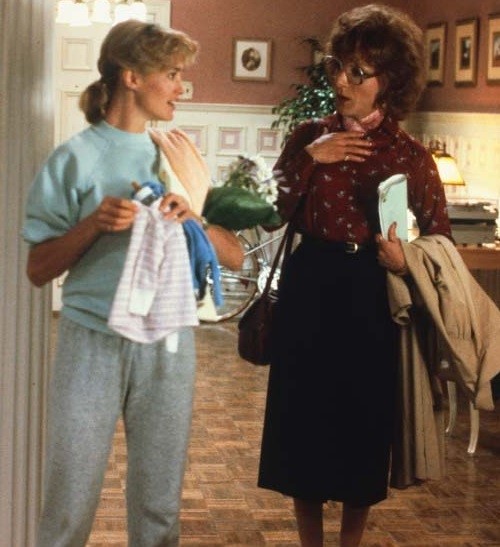
12. Teri Garr only signed on with the promise she could rewrite her role
While Lange took the Best Supporting Actress Oscar, she wasn’t the only Tootsie cast member nominated in that category: so was Teri Garr, who portrayed Sandy, an acting buddy and sometime girlfriend of Hoffman’s Michael. Garr had very much been on the ascent in the years prior thanks to such films as The Conversation, Young Frankenstein and Close Encounters of the Third Kind.
However – in what seems to be a bit of recurring theme with Tootsie – Garr wasn’t totally sold on her part, or the material, which she has called the work of “sexist men.” She only took the role under the condition that her ideas would be taken on board to make the character stronger and funnier. As a result, Garr ad-libbed a lot of her dialogue, including the scene where she complains of having been trapped in the bathroom for half an hour at Michael’s birthday party.
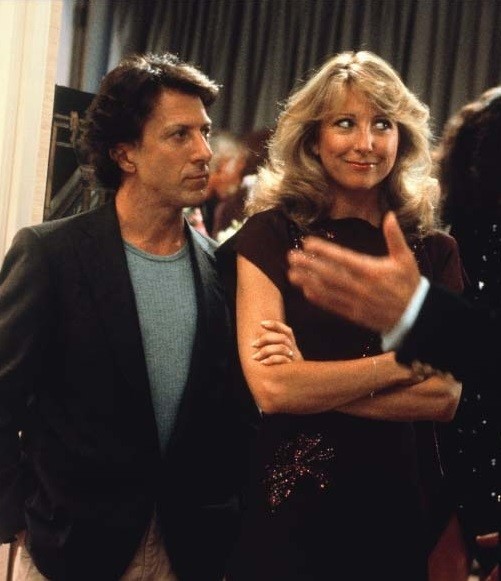
11. The film was Geena Davis’s first-ever audition
As well as starring some of the biggest names of its time, Tootsie launched the career of another major star in Geena Davis, who was working as a model at the time of the film’s production. The supporting role of April Page – the soap opera actress who shares a dressing room with Hoffman’s Michael/Dorothy, and spends much of this time in her underwear – was Davis’ very first acting job. Not only that, it was also the first time Davis had auditioned for a role in a movie; perhaps ironic, given how the film’s central character is an actor who can’t land an audition to save his life.
Even so, it wasn’t necessarily the most auspicious of beginnings for Davis; Pollack admitted her casting was primarily down to her height, because he wanted “somebody whose breasts would hit Dustin right in the face.” Nonetheless, Davis proved her worth as an actress, and would follow Tootsie with roles in Fletch, The Fly and Beetlejuice, before winning the Best Supporting Actress Oscar for The Accidental Tourist in 1989.

10. Bill Murray asked for his name to be taken off the credits
Bill Murray was one of the biggest comedy stars around when he signed on to play Tootsie’s Jeff, struggling playwright and roommate of Hoffman’s Michael. After three seasons on Saturday Night Live, Murray had broken big in movies with Meatballs, Caddyshack and Stripes. However, both Murray and the studio were wary of audiences taking his involvement in Tootsie to mean that it was another “Bill Murray movie.”
As such, to prevent any of the limelight being taken away from Hoffman, Murray agreed to have his name taken out of the starting credits, which he considered a “fun practical joke.” Two years later, Murray landed his signature role in 1984’s Ghostbusters, and his legendary status was confirmed.

9. Hoffman turned down Blade Runner for the role
Tootsie was the first film Dustin Hoffman made following his Academy Award-winning performance in 1979’s Kramer Vs Kramer. However, the actor came close to taking on another project in the meantime – and it would have been a bit of a departure for him. Director Ridley Scott met with Hoffman in hopes of casting him as Rick Deckard, the replicant-hunting cop in 1982 science fiction thriller Blade Runner.
While Hoffman was interested, he and Scott ultimately failed to see eye to eye on the project, and the actor turned his attention to Tootsie instead. Blade Runner ultimately found its gruff leading man in Star Wars megastar Harrison Ford, and the rest is history.
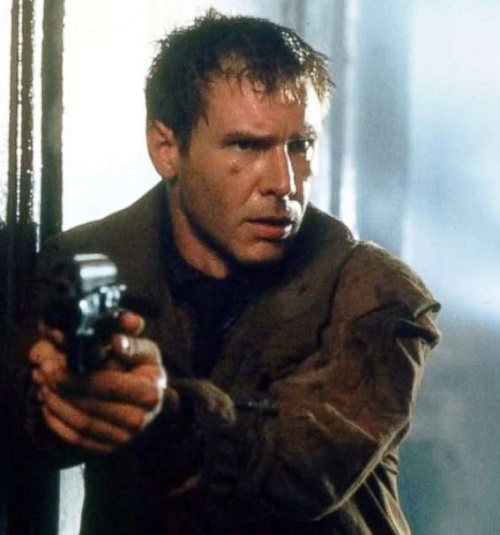
8. Meryl Streep helped Hoffman with his southern accent
The role of Dorothy Michaels didn’t only require Hoffman to make a convincing woman; he also needed to sound like a genuine Southern belle. To this end, Hoffman enlisted the help of Alabama-born actress Polly Holliday to help him master the accent. To test this accent out, Hoffman and Holliday performed scenes from the classic Southern-set play A Streetcar Named Desire – to an audience of one.
That sole audience member was none other than Meryl Streep, Hoffman’s co-star and fellow Oscar winner from Kramer Vs Kramer. Not that Dorothy was always intended to have a Southern accent; Hoffman had unsuccessfully tried to persuade Pollack to let him play her as French.
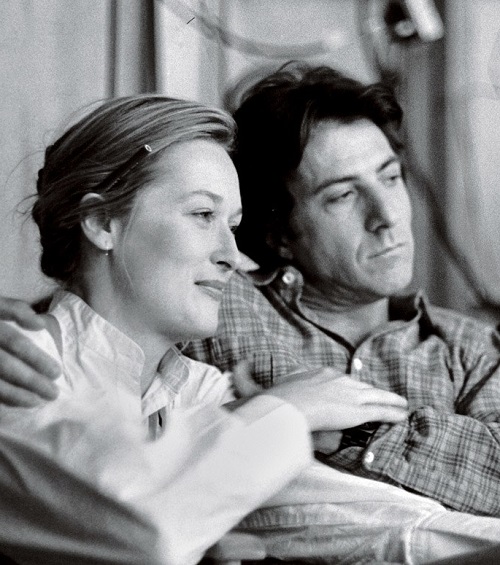
7. Hoffman went to his daughter’s parents’ evening dressed as a woman to test the role
In the movie, once Michael has landed his soap opera gig disguised as Dorothy, he proceeds to locate his agent (Pollack), who fails to recognise him. Being the die-hard method actor that he is, Hoffman would take such an approach in real life to ensure his female impersonation was convincing. For one, the actor went to his daughter’s parents’ evening at school as “Aunt Dorothy,” and reportedly the teachers never suspected it was Hoffman.
Nor were his daughter’s teachers the only people Hoffman managed to fool with his Dorothy persona, as he approached his old friend Jon Voight in costume – and Voight “looked right through” him. Hoffman is also said to have played a trick on actor José Ferrer, propositioning him in an elevator whilst dressed as Dorothy.

6. Dorothy’s costumes had to be made carefully to hide Hoffman’s Adam’s Apple
Hoffman’s wardrobe was vital to creating and maintaining the illusion of Dorothy’s femininity. One of the key problems the actor faced was his prominent Adam’s Apple, so efforts had to be made to conceal this. To this end, Dorothy is frequently clad in scarves and turtle necks which cover the bulk of the throat region, and had to be long enough to hide Hoffman’s 16-inch neck.
Hoffman also wore specially constructed prosthetic breasts from a clinic which usually catered for post-mastectomy patients. To top the look off, the actor also wore false teeth for a more feminine smile. It’s fair to say that it took a lot to make Hoffman convincing, and the entire movie rested on a good look.
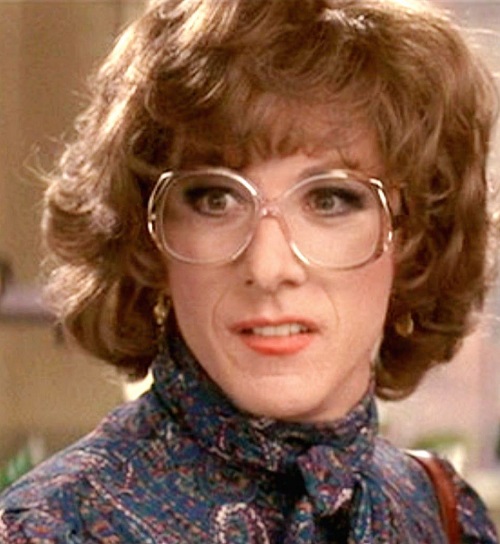
5. Hoffman had the back of his fingers shaved for the role
Naturally, grooming was another crucial factor in making Hoffman a convincing woman. We see Michael shaving his legs and face in the movie, but Hoffman also had to have his arms and even the back of his fingers shaved to hide any tell-tale signs of his masculinity. The actor’s 5 o’clock shadow posed a significant challenge though; no amount of make-up would hide it, and for this reason he could not be filmed for more than 4 hours at a time.
Skin treatment was also significant, with Hoffman enduring skin pullers attached to his scalp for a facelift, and wearing a latex base make-up. Hoffman suffered for his art, as he developed an allergic reaction to this make-up and frequently broke out in welts.
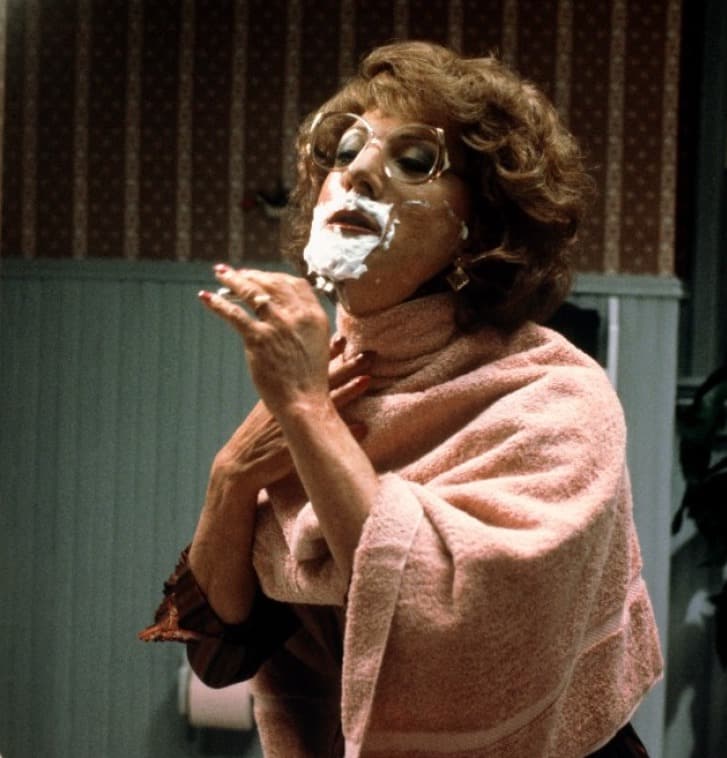
4. The crew gave Hoffman bad news when he was in drag because he was ‘much nicer as a woman’
The line between Dustin Hoffman the actor and Michael Dorsey the character seems to have been pretty thin on the set of Tootsie. Much like the character he plays in the movie, Hoffman was notorious at the time for taking things extremely seriously, and getting very angry when he felt that others weren’t approaching it with the same seriousness.
It seems that taking on the role of a woman may have softened the actor somewhat. If there was bad news to deliver to Hoffman, the Tootsie crew would only give him it when he was in drag as they said he was much nicer as a woman. Hoffman would explain years later that the role made him seriously reconsider his own attitudes toward women.

3. The film was ‘never a comedy’ to Hoffman
Hoffman has recalled that, when he first went into character as Dorothy Michaels in full make-up and costume, he had an epiphany. “I was shocked that I wasn’t more attractive… I went home and started crying, talking to my wife. And I said I have to make this picture, and she said, ‘Why?’ “And I said, ‘Because I think I am an interesting woman when I look at myself on screen.
“And I know that if I met myself at a party, I would never talk to that character because she doesn’t fulfil physically the demands that we’re brought up to think women have to have in order for us to ask them out.” As a result, Hoffman later said, Tootsie was “never a comedy for me.” In the wake of the #MeToo movement, Hoffman is one of the many Hollywood figures to have faced numerous accusations of sexual misconduct.

2. On the last day of filming, Sydney Pollack said “no one will see this piece of s**t”
Tootsie’s director took the project on with serious reservations, and it seems these never went away. An on-set interview saw Pollack lamenting, “I’m 47 years old and I have to accept the fact that I’m probably not going to set the world on fire… If I was going to do that, I would have done it by now.” It would seem the actor-turned-director viewed Tootsie as emblematic of where his career had taken him, far from the sort of artistic, challenging material he would have preferred to make.
Supporting actor Dabney Coleman – who, like so many involved, also signed on for the movie with some reluctance – recalled Pollack telling him on the last day of filming, “Thank God no one will see this piece of s**t.” Of course, Pollack was wrong, as Tootsie wound up the second biggest box office hit of 1982 behind Steven Spielberg’s ET, and landed 10 Academy Award nominations – including the aforementioned win for Jessica Lange.

1. It’s been turned into a Broadway musical
Like a great many Hollywood hits of years gone by, Tootsie has been updated for the stage – a homecoming of sorts, given the movie was originally adapted from a play. Tootsie: the musical premiered in Chicago in September 2018, with music and lyrics by David Yazbek, who has also adapted The Full Monty, Dirty Rotten Scoundrels and the upcoming The Princess Bride into stage musicals. However, significant changes were made to Tootsie’s central story, both in light of #MeToo and Time’s Up, and to make it more fitting for the stage.
Instead of landing a role in a soap opera, Michael/Dorothy wins a role in a Broadway musical, and the female supporting characters have been made stronger and less subservient to the men around them. The show picked up some major awards at the 2019 Tonys, including Best Book of a Musical and Best Actor for Santino Fontana (of Frozen and TV’s Crazy Ex-Girlfriend).


